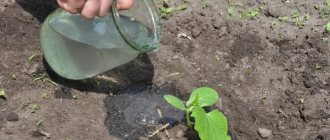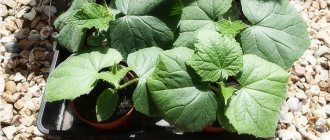How to fight whitefly
When the whitefly has already settled in the greenhouse or on indoor plants, it is important to quickly find your bearings and choose the right means in order to properly fight and, in the end, get rid of the annoying insect. And you always need to start with prevention.
Preventive actions
- You need to choose only high-quality planting material from trusted suppliers.
- Planting should be sparse.
- Ventilate greenhouses regularly or install high-quality ventilation, since midges cannot tolerate temperature fluctuations.
- The ground can be lightly sprinkled with ash; insects will definitely not settle in this place.
- It is necessary to regularly treat crops with general strengthening preparations, which will help to more easily cope with a pest attack.
- Houseplants need a wet wipe of their leaves from time to time, and at the same time you can check for uninvited guests.
- The greenhouses are disinfected after harvesting.
- In winter, the greenhouse is frozen so that no pests survive.
- We indicated above at what air temperature the whitefly dies (up to +10 °C), so from time to time take the affected plants into fresh air, but not below +5 °C.
Did you know? If you eat a banana, your chance of being bitten by a mosquito increases significantly. They are very attracted to a person who smells like a banana.
Mechanical methods
One of the most well-known methods of catching adult individuals is to hang yellow oilcloth trap leaves coated with glue over plants, which attract midges with their appearance. You can also collect them by hand or wash them off the leaves with soapy water if the area is small, for example, on a home flower.
Fighting with folk remedies
This insect is quite well adapted to various methods of control, which is why there are few folk methods. In the early stages of infection, you can try:
- dandelion, 50 g of roots and 50 g of green leaves of which need to be crushed, pour 1 liter of water and leave for 3-5 hours. Before spraying, strain and process once every 7–14 days.
- infusion of garlic, which should be infused for at least four days. To do this, pour 100 g of finely chopped garlic into 1 liter of water and leave. Before spraying, dilute 5 g of this concentrated infusion with another liter of water and treat it with this.
- treating leaves with a soap solution using laundry or tar soap. Rub the soap, beat with water until foamy and thoroughly wipe the leaves with this mixture.
It is also worth mentioning repellent plants, which repel whiteflies with their scent. These are nasturtium, peppermint, thyme, and wormwood.
https://youtube.com/watch?v=1gQ845XvkZA
Chemicals
Among the active insecticides, Aktara, Confidor, Fitoverm, Actellik, Mospilan and a number of others that have performed best, which can be found on the market or in a specialized retail outlet.
Important! Carefully read the recommendations for processing crops, which are indicated on each package of insecticides separately, and check the expiration date
Description of the whitefly, its reproduction
The whitefly belongs to the tiny sucking parasites. It looks like a cream-colored moth with a small body of 1-2 mm, covered with a transparent waxy coating reminiscent of flour. The female lays grayish eggs on the lower part of the leaf, attached to small stalks. Under favorable conditions, 300 eggs per season, 10-20 eggs at a time.
The hatched greenish larvae have an oblong shape, antennae and three pairs of legs. Having found a favorable place for their feeding, they attach themselves and lose mobility, resembling whitish scales. Mostly young leaves are selected, but if there are large numbers, they are placed on other parts of the plant. Their sugary secretions are dangerous because they are favorable soil for the development of sooty fungus, which clogs leaf stomata and interferes with sunlight. It is the larvae that cause the main damage. They gradually increase in size and go through several stages of molting. At the last stage, the white coating covering the larva hardens. She is ready to turn into a butterfly.
The development cycle is 3-5 weeks.
A plant infected with whitefly has leaves that dry out and buds that are deformed. It prefers to breed on fuchsia, balsam, begonia, lantana and geranium (pelargonium), but can also attack other species. In greenhouses it lives on cucumbers, tomatoes, eggplants and peppers.
Prevention
Whitefly on indoor plants - how to deal with it at home
The best time for the pest is in a warm greenhouse and greenhouse, as well as in places where there is high humidity and temperature, there is no strong ventilation system, and agricultural crops are located close to each other.
Whiteflies are most often located on the inside of a plant leaf.
Therefore, in measures to prevent the occurrence of whiteflies, it is advised to make every effort to create a favorable climate for plants, humidity levels, and ventilation systems. It is no less effective to use strengthening preparations for plants.
It is important to carry out timely inspection of crops and, if at least one pest is identified, to take all measures to get rid of it as quickly as possible, since plants will not be able to resist the whitefly for a long time. The whitefly dies at temperatures below +10C°, and the larvae stop growing
However, this does not affect the pest eggs in any way, since they adapt well to changes in temperature.
The whitefly dies at temperatures below +10C°, and the larvae stop growing. However, this does not affect the pest eggs in any way, since they adapt well to changes in temperature.
Alternative Methods
Instead of insecticides, practically harmless folk recipes are often used:
- sugar syrup;
- a solution of garlic or tobacco;
- tincture of dandelion or yarrow.
To prepare a potion from yarrow, take 90 g of the dried plant, add 1 liter of water, and leave for 2-3 days. The leaves are sprayed with a spray bottle and wiped with a sponge dipped in the mixture. Tansy planted in the corners of the greenhouse also helps a lot.
Garlic tincture is made as follows: 160 g of the grated component is poured into 1 liter of water, left for 4-5 days. The resulting solution is diluted to 5 percent, and the vegetables are sprayed. It is very effective if there are not very many insects. You can also take 50 g of dandelion rhizomes, 50 g of its leaves, add a liter of water, leave for a week. Greenhouse plants are treated with the product twice, with an interval of 7-10 days.
For small spaces, any tablets or anti-moth preparations are suitable - each vegetable is supplied with them. Whiteflies tolerate the smell of lavender extremely poorly. Sometimes “cat” shampoo with permethrin is diluted in half and sprayed on plants. It should be remembered that shag infusion is not suitable for combating the tobacco variety of insect.
Methods for controlling whiteflies
Aphids on houseplants - how to fight them at home
To combat whitefly, plant leaves can be washed with yarrow infusion.
In severe forms of infestation, pest control is difficult. In the early stages of development, just hatching from the egg, the larvae are tiny gray dots and are practically resistant to insecticides. Insecticides do not have a detrimental effect even a little later, when the larvae are ready to transform into adults.
The main method of controlling whiteflies at this stage is manual collection of parasites. Leaves on which colonies of eggs are found must be torn off and burned.
Fly tape is used to kill adult insects. It is hung on the branches of infected plants and in close proximity to them. Hand picking is helped by placing objects in bright sunny shades (golden, white-yellow, yellow) next to the flowers. Insects settle on the surface, after which they are easy to catch and destroy.
In cases of extensive infestation, special chemicals will help cope with adult pests: Mospilan, Confidor, Furanon, Actellik, Fosbecid, Arrivo, etc. They treat plants once a week.
Small indoor flowers completely or wide leaves of lemons, palm trees, ficuses can be washed with infusion of yarrow or garlic.
Garlic extract can help against whiteflies.
To prepare the infusion, use the following recipe:
- 30 g of peeled garlic cloves are passed through a meat grinder;
- pour 10 liters of water and mix;
- insist for 24 hours;
- filter through cheesecloth.
In addition, you can use a recipe for preparing a water extract of garlic, which will effectively help get rid of whiteflies:
- 500 g of peeled garlic is crushed using a meat grinder;
- pour 5 liters of water, mix, filter;
- squeeze out the grounds well and add 1 liter of water again;
- the mixture is filtered;
- The pomace is placed in a 10-liter bucket and topped up to full volume.
Small plants are completely dipped into the resulting preparations, and the leaves are wiped with a sponge or rags. You can also spray infected flowers with a spray bottle.
It is also recommended to use an alcohol extract of pyrethrum. To prepare the drug, take 5 g of laundry soap, 25 g of dry pyrethrum and 100 g of alcohol with a strength of 70°. If necessary, pyrethrum can be replaced with hot pepper or yarrow. Then the dry raw material is poured with alcohol and left for about 12 hours. The finished tincture is filtered and mixed with crushed laundry soap and 1 liter of water.
The product is used for spraying. The drug is stored in a cool place for no more than 3 days.
https://youtube.com/watch?v=mldUhdOFdtI
When treating plants against pests with insecticides, care must be taken. First of all, people and animals must be removed from the premises.
Then the hands are protected with gloves, and the respiratory organs are protected with a cotton-gauze bandage or a respirator. To protect your eyes, it is advisable to wear glasses. At the end of the procedure, hands and face are washed with soap, and the room is thoroughly ventilated.
In order for pest control measures to be effective, before getting rid of the whitefly, it is necessary to analyze the extent of the damage. Perhaps it is not very extensive and the use of toxic drugs will not be required.
Characteristics of the pest
Many plant growers are interested in: how to deal with malicious garden pests such as whiteflies? It often settles in greenhouses, greenhouses, less often in the open air or indoor plants, actively reproduces, and can seriously damage the crop, even to the point of its complete destruction, if measures are not taken in time. Whitefly, also known as aleurodidae, is a very common pest that occurs in greenhouses. Aleron means flour in Greek.
The parasite is an insect capable of flight, vaguely resembling a white moth with a body length of less than 0.2-0.3 cm. It settles in large colonies, damaging more than 600 species of cultivated and weed plants, preferring the youngest, succulent leaves. Thanks to elastic wings covered with a waxy coating, the creature is reliably protected from the influence of the vast majority of insecticides. Its larvae look like grayish grains.
In the natural environment, the whitefly feeds on a variety of flowers, but it really likes cucumbers, tomatoes, eggplants, and peppers in greenhouses. Hundreds, thousands of pests can quickly destroy almost the entire crop in greenhouses of any size. The insect does not reveal itself for a long time, hiding under the crown of the plant.
For its nutrition, the creature uses not specifically the leaves, but the juice that is inside them. As a result of such exposure, the plant quickly loses strength, new shoots stop appearing, individual parts wither, the stem dries out, becomes brittle, which leads to death. The insect sucks out a huge amount of liquid, releasing most of it directly onto the plantings, which is why they become covered with a sticky coating, which favors the appearance of various forms of fungus, almost completely blocking the ability to photosynthesis.
The most dangerous species
Aleurodids are a family of 1,500 insect species, about 20 of which are dangerous to crops. The most common is the greenhouse or greenhouse type, once imported from South America. In mid-latitudes, the pest is able to survive year-round. Not only does he fly well, but he also runs fast on 6 long legs. Belongs to Hemiptera.
Southern regions are often attacked by tobacco whitefly. It is distinguished by the fact that the wings are folded on the sides, rather than in the shape of a roof. Control of various pests may differ slightly in all respects. Cotton or tobacco produces 20-25 generations per year, but actively develops only at a temperature of +32-36 degrees.
Acid aleurodide is often brought from China along with citrus seedlings. This is a quarantine insect that is not able to survive in temperate climates, but is dangerous in warm regions. Strawberry and cabbage varieties are also often found. They produce no more than 1 generation per season, the damage from them is insignificant, unlike those species that feed on any weeds.
Most of them bury themselves in the ground for the winter, in compost heaps, where they wait for favorable conditions to procreate. Among other things, the pest spreads many diseases:
- virus of tomato leaf curl and tobacco plants - they become yellow and sharply deformed;
- golden mosaic;
- infectious yellowing of cucumbers and certain types of lettuce.
Life cycle of an insect pest
Aleurodida reproduces excessively quickly. It is almost impossible to control the population that has settled in a greenhouse. The parasite lays eggs on the inside of the leaf - there they are hardly noticeable, and their removal is problematic. The hatched larvae look for their own food. If you do not destroy them at this stage, then, having matured and already flying, the whiteflies move to other plants, gradually infecting them all.
The life cycle of a moth is quite complex:
- laying eggs - the female gives 120-250 eggs during one period, 15-20 at a time. She lives for about a month;
- first instar larvae hatch in 12-13 days. They are called “strays” because they quickly spread throughout the plant;
- larvae of the second instar - stick to the most juicy parts, being motionless and covered with a waxy coating;
- larvae of 3-4 instars – full-fledged insects emerge;
- adult individuals have the ability to fly and actively eat available vegetables.
In comfortable conditions, all stages are mastered in 25-45 days - if the environment is warm and humid enough. Fertility directly depends on the plant-breadwinner - the juicier it is, the more rapidly the parasite multiplies. Its maximum abundance is observed in July-August, especially if there are frequent warm rains.
What you need to know about whitefly infestation?
It is not difficult to determine that vegetables are affected by this particular insect - the “traces” of pests resemble an invasion of aphids. The leaves quickly become sticky, curl, and are covered with yellow-brownish spots. If you touch the plant, a flock of white, very small butterflies takes off from it and flutters from place to place. When this is noticed, all vegetation in the greenhouse should be carefully examined to identify signs of damage:
- vegetable crops are greatly retarded in growth;
- the leaves have yellow fuzzy spots, some are deformed, some are already withering;
- the whole plant is covered with a honey-like sticky layer;
- there are areas of black color - sooty fungus that accompanies dew;
- the lower part of the leaves is partially covered with translucent scales - these are aleurodid larvae.
When at least one symptom is present - the entire crop in the greenhouse is under threat of destruction, in order to save it, some criteria must be urgently adopted.
Why does this parasite appear?
There are many reasons why this creature gets wound up. For example, when the summer is rainy but warm, the pest loves high humidity and temperature, so it often settles in greenhouses. He will like those greenhouses where vegetables and flowers grow too close to each other, while there is practically no sufficient ventilation.
It is advisable to begin the fight against harmful insects as early as possible - long before harvest:
- plantings are planted at a great distance from each other;
- high-quality, frequent ventilation is organized;
- fertilized with effective biostimulants;
- do not spray if humidity is high.
Preparations such as Domotsvet, Epin, Amulet, etc. will be useful as feeding.
Chemicals against whiteflies
Types of cacti: plant options without spines or with leaves
It happens that all traditional methods of combating whiteflies have been tried, but it continues to destroy green spaces. In this case, it is necessary to use modern chemicals that can quickly and effectively deal with the pest.
How to get rid of whiteflies on indoor flowers.
There are many different chemicals, among which the most commonly used are the following:
Aktara
This is the number 1 chemical control agent for whiteflies. The systemic drug has a long period of action (up to five weeks). To destroy whiteflies, the plant must be watered with Aktar solution at the root. Since plant sap is a treat for adult whiteflies and their larvae, when the constituent chemical thiamethoxam gets into it, the pest population will die.
To destroy whiteflies after the first treatment, it is necessary to use a strong Aktara solution (the concentration should be 3-4 times greater than that indicated by the manufacturer). For example, the product comes with instructions that say that the contents of the sachet (1.4 grams) must be dissolved in 10 liters of water. You make your own concentration of the killer solution: dissolve the powder in 2-3 liters of water, and then water your green spaces with the solution. The drug does not cause harm or burns to the treated plants, but whiteflies are completely destroyed.
Aktara is a very effective drug against whiteflies, and is easy to process - most often, one watering is sufficient.
Confidor
This effective insecticide has systemic and contact effects. After watering and spraying the affected plants, after an hour and a half you will notice the death of the pests. Most often, one treatment is enough to kill whiteflies.
The active ingredient of the drug is imidacloprid, which is also a component of other drugs: Appleuda, Copfidor, Admira, Guacho, Provado, Commander, Marathon - these are interchangeable chemical agents against whiteflies.
Akarin (Agravertine)
The drug is capable of destroying all types of pests, including whiteflies, spider mites and some types of root-knot nematodes. The product is sprayed on the affected plants. Wetting the leaves should be abundant. It’s good if you manage to target the pests (this can be achieved by spraying the solution into a cloud of whiteflies).
Akarin is an insectoaricide with contact-intestinal action. It is able to penetrate the body of pests through food, as well as through direct contact.
Spark (golden, biological, double effect)
Sticks, water-soluble tablets, powder, liquid in ampoules: the drug has a long-lasting effect. Plants are watered with it, as a result of which the toxic substance enters the roots and tissues of plants and is retained in them for about 25 days. One treatment is sufficient to eliminate the whitefly population.
Fitoverm
This drug is an insectoacaricide that destroys any insect pests. Plants are sprayed 1-2 times with this product, and the whitefly and all its offspring are destroyed.
Aktellik
Using this chemical helps get rid of insects and mites. Excellent at killing whiteflies. When using Actellik, do not forget about its strong toxicity (class 2). In addition, the drug has an unpleasant odor.
There are other chemicals that help fight plant pests: Zeta, Rovikurt; Inta-Vir; Fufanon; Top Star; Alatar.
Mechanical means of killing moths
The old-fashioned method of fighting parasites is the safest for plants, but is ineffective. Aleurodida is collected by hand and knocked down with a powerful stream of water from a hose. Having collected adult insects, the leaves are processed by washing them from larvae and honeydew using a soap solution. To prepare it, take 1 part of shabby laundry soap, 6 parts of water at a temperature of 65-75 degrees. Cool the liquid, moisten a cotton wool or sponge with it, and wash the leaf plates.
Particular attention should be paid to the inner sides, where larvae and eggs are usually found. This method makes sense if the greenhouse is very small, otherwise it will require too much effort. Sticky traps are more effective. They are produced in sunny yellow or bright blue color. These colors are very attractive to whiteflies - the parasite willingly lands on them.
Some time after hanging the trap strips, it becomes clear whether there were a lot of pests in the greenhouse. The quantity should be chosen at the rate of at least one per 10 square meters. m of greenhouse area. Instead of store-bought Velcro, sometimes they make their own trap: they take rosin, paper, honey, paint, castor oil, and Vaseline. The active ingredients are melted in a water bath, mixed, castor oil and the remaining ingredients are added. All components must be the same quantity. Then the paper is cut into strips and painted yellow and blue.
The mixture is cooled, applied to colored paper, and placed in different places in the greenhouse. The easiest way is to use painted sheets of plywood - the parasites are washed off with running water, when there are a lot of them stuck, the product is applied again. The effectiveness of traps, if made correctly, is average.
Another option: take plastic or thick cardboard, painted yellow. Entomological glue is applied to it. The lighting is also installed there. Suspend the structure near the tops of plants. If you do this in the evening, up to 90% of the whiteflies will stick in 1-2 hours. At night they set another trap: a small box with a yellow light in it, and a tray with moisture at the bottom. Insects fly into the light, get burned, are thrown into water, and die.
Folk remedies for whitefly
People have empirically identified a large number of methods that help in pest control. For those who are interested in how to get rid of whiteflies using folk remedies, we offer the following effective methods:
Infusion of yarrow. Yarrow fights well against insects, from the leaves of which a solution is prepared. Spraying is carried out several times to completely destroy insects. The infusion should be prepared, taking into account that 1 liter of water should contain 90 g of leaves.
Wood ash. A popular remedy among gardeners is wood ash, from which a solution is prepared using 1 tbsp. for 5 liters of liquid. Everything should be infused for 3-4 hours. After time, add 50 g of laundry soap to the infusion.
Garlic infusion
When figuring out how to fight whiteflies using traditional methods, we suggest paying attention to the following available remedy: chop three cloves of garlic, add water and leave for 24 hours. Spraying should be done several times.
Soap solution
Buy laundry or tar soap, grind it using a grater, and then dissolve it in water, taking into account the ratio of 1:6. Whip the liquid until foam forms, and then apply it to the leaves using a sponge. You can spray the green parts with the prepared solution, but then it should not be foamed. It is recommended to carry out a new treatment after a week.
Tobacco tincture. Buy cigarettes, for example, “Prima”. Remove the tobacco from the cigarettes and add it to a liter of warm water. Place the mixture in a dark place for five days and you can use the infusion. Carry out the procedure every three days until the pests are completely gone.
Dandelion infusion. To prepare the product, take 40 g of dandelion leaves and roots. Grind the plant material and fill it with a liter of water. Infuse for 3-4 days, and then strain and use the infusion to spray plants. Carry out the treatment a couple of times with a break of a week.
How to recognize a whitefly?
Recognizing a whitefly is not at all difficult. This insect looks like a small butterfly, a few millimeters in size. The pest looks like a moth, has elongated white wings that resemble flower petals.
If you notice small butterflies flying near plants in your garden or greenhouse, you should definitely inspect the bushes in the area.
When exploring the area, pay attention to the following signs:
- is there a flock of moths when shaking the plants;
- the plants are healthy or their stems begin to dry out and the leaves lag behind in development;
- are there any white new growths (moth larvae) on the outside of the leaf?
- whether honeydew (liquid secreted by the whitefly during feeding) has appeared on the leaves of the plants.
Since the butterfly is very tiny in size, many older gardeners do not notice it at first. This insect reproduces quickly and produces up to 15 generations during the year, so the fight against the problem most often begins only when the summer resident notices huge swarms of pests when moving the plant.
The whitefly butterfly is considered a harmful insect
What does a whitefly look like?
The presented insect is flying and it is small, so the body length is 1-2 mm. This moth has a waxy coating on its wings, similar to flour.
There are several ways to defeat whiteflies, so it is important to know the enemy by sight. This type of insect has a complex development
- The mobile larva finds the most suitable place for feeding and adheres tightly to the plant, creating a waxy coating around itself.
- After the first molt, the larva's legs and whiskers become smaller, and it stops moving. Over time, the body shape changes and the larva stops feeding.
- A restructuring of the body occurs, so the whitefly develops wings, legs, whiskers and other organs.
- After emerging from the egg, the larva looks like a grain that is attached to the back of the leaves. On top it is covered with a waxy coating, which will protect it from the influence of any negative factors. It is useless to fight insects at this stage.
- Adults are capable of laying 130-280 eggs. in the shape of a ring located on the inside of the leaf.
Whitefly pest in the garden
The insect is a polyphagous insect, and it loves cucumbers, feeding on their juice. The whitefly reaches its maximum population size at the end of summer, when conditions are ideal for reproduction.
It is important to know how to deal with whiteflies in the garden, since plants in open ground where the bushes are not protected are more often affected. The main symptoms of appearance:
- Since whiteflies feed on the sap of plant crops, they cause it to turn yellow. There is deformation of the leaves that dry out. After a while, the buds fall off and as a result the fruits are not set.
- Insects form a sugary coating on the top of the leaves that shines. Fungi multiply in it, causing enormous damage to plants. As a result, the leaves and fruits become white, and after a while they turn black.
- It is worth noting that the whitefly carries more than 18 dangerous viral diseases, which are accompanied by various symptoms, for example, necrosis, mosaic, and so on.
Whitefly in a greenhouse
It is more difficult for insects to get into greenhouses and greenhouses, but it is worth noting that ideal conditions for life and reproduction have been created there. Pests can be found in enclosed spaces not only in summer, but also in spring and autumn, and if the greenhouse is heated, they will live all year round. Greenhouse whitefly spreads quickly, so the previously mentioned symptoms become stronger and the plants are stunted and look depressed. In addition, the yield of cucumbers will significantly decrease.
Whitefly on indoor plants
Many flowers and other crops at home can be susceptible to insect attack. The rules for how to get rid of whiteflies on indoor flowers, as well as the list of symptoms, are identical to those for plants growing in open areas and in greenhouses. In addition, it is worth mentioning the reasons that provoke the appearance of pests, such as a warm and humid environment, lack of fresh air and close proximity of flowers relative to each other.
Causes of infection
The main reason for the appearance of whiteflies is high humidity and high air temperatures. In addition, the pest most often appears in those greenhouses and conservatories in which plants are planted very often, which disrupts normal air circulation.
But there may be other reasons:
- bringing untreated plants into the greenhouse for wintering from the street;
- purchasing infected seedlings from a store;
- relocation of seedlings from an infected greenhouse;
- purchasing or bringing in contaminated soil from a site.
On a note! Whiteflies can get into the greenhouse along with the seedlings that you grew in the apartment. Moreover, before entering the warm, damp shelter, the insect could well have been undetected, since it was hibernating!
Knowing these reasons, it is quite easy to prevent an uninvited guest from entering the greenhouses. First of all, it is advisable to treat the constructed greenhouse with pesticides and equip it with a sufficient number of windows and doors to ensure normal ventilation. When growing vegetables and other crops, always follow the rules of agricultural technology: try to maintain the required air and soil temperature, periodically ventilate the room, do not allow plantings to thicken and monitor humidity. These simple preventive measures will help prevent the proliferation of not only whiteflies, but also other greenhouse pests.
Fighting whiteflies in the garden with folk remedies
Gardeners have come up with ways to combat whiteflies in open ground, using only folk remedies that are at hand. Preparations prepared from natural raw materials do not penetrate deep into the plant, act locally and will not cause harm to human health. This way you can get rid of insects and serve plants without fear. At the same time, the earth does not accumulate decay products from drugs, as happens with chemicals. Traditional methods of dealing with whitefly:
- Tobacco
. You need to fill a pack of cigarettes without a filter (for example, “Prima”) with 1 liter of water, leave in the dark for 5 days, filter and spray the plants with a spray bottle once every 3 days. - Dandelion
. You can use the roots and leaves of the plant - take 80 g of raw material, chop it, pour a liter of boiling water. Leave the infusion for three days, then filter. Infected bushes are irrigated with dandelion solution twice at intervals of a week. - Yarrow
. Take 100 g of plant leaves and pour a liter of boiling water. Set aside the infusion for 2 days, filter and spray the plants. You need to use yarrow twice or thrice every seven days.
Ammonia for whiteflies
A very effective remedy is ammonia for whiteflies. It is used in a concentration of 50 ml of product per bucket of water. You can also add a little liquid soap there so that the mixture sticks better to the surface of the foliage. Plants are sprayed with this composition from a spray bottle. Treatment is carried out every 3 days until the insects are completely destroyed. Ammonia will not only help get rid of many parasites, it is an excellent nutrition for plants - it saturates them with nitrogen.
Whitefly ash
Many gardeners use ash against whiteflies. It can be used both in dry and liquid form. Whitefly in open ground - how to get rid of it using wood ash:
- You need to add 1 glass of ash to 5 liters of heated water, mix and leave for 4 hours. Rub 50 g of laundry soap into the resulting product, stir and spray the plantings for three days in a row to get rid of pests in the open ground.
- Mix dry wood ash with tobacco dust, sprinkle soil at the roots and dust the plants well.
Garlic from whitefly
Another effective defense is garlic against whiteflies. An infusion is prepared from it, which is used to irrigate the affected plants. To prepare the suspension, you need to chop 3 cloves of garlic, add 1 liter of water, close the container with a lid and leave the mixture for a day. You need to irrigate the leaves of plants and the top of the soil. To get rid of whiteflies in open ground, plants must be treated three times at intervals of a week.
DIY whitefly trap
An interesting option for combating flying parasites is whitefly traps. But they are designed to destroy mature individuals. Traps are made from cardboard or plastic; the top is generously smeared with glue, which does not dry and does not smell. The bright yellow color of the product attracts insects like a glowing light bulb. As a result, whiteflies, spider mites, aphids, mosquitoes and other pests land on the trap. Similar products are sold in gardening stores. You can also use sticky tapes designed to catch flies. The owner’s task is to change overcrowded traps in a timely manner.
It’s easy to make a trap for insects at home. You need to take cardboard and paint it with yellow paint. When the material dries, it should be generously lubricated with a mixture of honey, castor oil, petroleum jelly and rosin. When insects come into contact with cardboard, they can no longer free themselves and die. Traps should be hung near affected plants. They are attached to a wire, making it convenient to hang traps on holders. To prevent beneficial insects from getting on the tapes, it is not advisable to use them during flowering.
Tar soap against whiteflies
In a small area, you can use tar soap against whiteflies. This method is effective, but labor-intensive. Whitefly in open ground - how to get rid of it using tar soap:
- The bar of soap should be crushed with a knife or grated, then mixed 1 part of soap shavings and 6 parts of water. The finished product must be beaten well to obtain a stable foam and applied to the stems and foliage of the plantings with a sponge.
- The same preparation can be used to irrigate plants and the soil around them, but you should not exceed the concentration of soap - you can burn the crop tissue. You need to make sure that the soap does not penetrate too much into the ground - the plant will not like this feeding. Often one treatment is enough to get rid of whiteflies in open ground. If necessary, it can be repeated after a week.
How to prevent whiteflies?
An effective way to control insects is the biological method. It consists of placing direct enemies of small butterflies in a greenhouse or conservatory.
Encarsias are known enemies of whiteflies. Encarsias are small insects that lay eggs in whitefly larvae. Over the course of a month, a female encarsia is capable of housing about 100 of her young in whitefly larvae. Encarsia larvae feed on the body contents of whitefly larvae and obtain useful microelements from them. It is important to maintain the correct ambient temperature for encarsia propagation.
The macrolophus bug is also an enemy of the whitefly. The beneficial bug feeds on whiteflies, aphids and mites. During its life, one bug can destroy up to 2.5 thousand whitefly larvae and even more of its eggs.
Types of whiteflies and photos
More than 1,500 species of whiteflies have been identified by scientists. Some of them can be found on the territory of our country.
- Strawberry (Aleurodes fragariae Walk) - overwinters as a yellow egg in the tissues of young stems of strawberries and other herbaceous plants, more about which can be found here. The main damage is caused to strawberries and strawberries.
- Honeysuckle (Aleurodes lonicerae Walk) is a fairly common type of whitefly that harms plants in open ground. It can be found quite often in autumn, especially on grape leaves. Distinguished by black speckles on the front wings.
- Cabbage (Aleurodes brassicae) - causes the main damage to all types of cabbage, but easily spreads to other vegetable crops.
- Iris (Aleyrodes spiraeoides) - especially likes to settle on irises and gladioli, but is found on vegetable crops, cotton and some herbaceous plants. Adults have wax speckles on each wing, and circles of wax can be found around the egg mass.
- Ashy (Siphoninus phillyreae) - this type of whitefly most often affects shrubs and trees (both fruit and ornamental), as well as citrus fruits. Larval nymphs have a tiny tubular fringe with droplets of wax.
- Mulberry (Tetraleurodes Mori) - They target citrus and other trees. Nymph larvae are distinguished by a black body with a white, waxy fringe.
- Bordered (Trialeurodes abutilonea) - this species can be found on vegetable crops, cotton, and melons. Adults are distinguished by a gray body color and dark transverse stripes on the wings.
Crowned whitefly
- Giant (Aleurodicus dugesii) - the size of an adult can reach 5 mm, and the length of the wax threads can be up to 20 mm. Often found on hibiscus, begonia, vegetable crops, it can also damage some trees and ornamental plants.
- Citrus (Dialeurodes citri) - in addition to citrus fruits, it can harm other southern trees, as well as gardenia, ash, lilac, privet, jasmine, honeysuckle and others. A distinctive feature of this type of whitefly is a mark on the back that resembles a “Y”.
- Tobacco or silver (Bemisia argentifolii, B. Tabaci) - although this species loves hot and humid weather, which contributes to especially active reproduction, it has a wide distribution area. It can infect a wide variety of plants, but prefers vegetables and melons, as well as flowers and medicinal herbs. Adults are distinguished by a specific, slightly inclined arrangement of wings.
- Greenhouse or greenhouse (Trialeurodes vaporariorum) - damages not only indoor and greenhouse plants, but also open ground plants, and a wide variety of them. Very resistant to environmental conditions. Adults have a combination of a yellow body with white wings.
The most harmful are the last three types of whiteflies, which are considered quarantine insects throughout the world. They carry the largest number of viral plant diseases and are capable of causing significant damage.
How and when to treat the area?
The area must be treated at a certain time. This way the effect will be higher, and the whitefly will disappear from the area faster.
On vegetable crops
If an insect appears on vegetable crops, you first need to use folk recipes, and only then use chemicals. This will protect the flowers and stems of the bushes from harmful substances entering the plant. It is best to spray vegetables, but you can also water the soil with the solution.
You need to use control methods on a quiet day that does not predict precipitation or strong winds. Also, do not spray plants with chemicals on a hot day, as burns may occur on the leaves. Treatment should be carried out at the moment the whiteflies appear, without waiting for their reproduction.
On flowers
Flowers should not be treated with chemicals that are absorbed into the plant, as the flower may wither. It is best to process flower stalks when flowers have not yet begun to form on them. At the same time, whiteflies should not be allowed to reproduce.
Flowers also need to be sprayed with solutions or watered the soil around them.
On bushes and trees
Trees and bushes, due to their large size, are recommended to be pollinated with chemicals. They will destroy harmful insects that have hidden under the bark or in other hard-to-reach places. You need to spray the plant before flowers or fruits appear on it.
Where and when do whiteflies appear?
Baby moths live on the undersides of leaves when the weather gets warm. It should be said that heat above 30 degrees is a blessing for this insect. At 18 degrees, the vital activity of parasites is minimal, and at 10 degrees, whiteflies die.
Adult butterflies love moist, even musty air. If you are careless about ventilating greenhouses, then pests will definitely appear in them.
Fortunately, whiteflies have many enemies who simply eat them. These are large insects and birds. She can't even stand a slight breeze. That is why, if there is a greenhouse on the site, then the white death will be more willing to live there than in an open place.
The pest can be easily detected, even though it is tiny. The wings of the insect are yellow with a powdery coating. Against the background of green foliage, these butterflies are clearly visible. In addition, if you shake a twig of a plant, a flock of harmful butterflies will immediately fly out from under the leaves, of course, if they were there.
Whiteflies suck sap from plants, and to do this they do not need to frequently move from place to place. These microscopic butterflies are inactive. The larvae almost do not change their location at all, although they can do this.
The presence of larvae on plant leaves first leads to the appearance of spots on them, then to wilting and rotting. The latter is caused by the whitefly's eternal companions - fungi.
It is very difficult to fight this tricky insect, especially in greenhouses, where whiteflies at different stages of development simultaneously live. For example, if you managed to get rid of butterflies and young larvae, it is impossible to get rid of mature larvae with a waxy shell even with the use of strong chemicals.
Thus, they successfully turn into butterflies, and soon lay eggs. The process resumes again.
What can be done to prevent the pest from multiplying so much?
As you know, after harvesting, gardeners do not treat their plot as carefully as they would like. We are talking about the attitude towards the destruction of harmful insects. Whiteflies don’t care much about the harvest being harvested. They have enough plant juice until the cold weather sets in. Plus, the butterflies survive the winter safely, and with the onset of spring they again lay eggs on the underside of the leaves.
Preventive actions
In the fight against whitefly, preventive measures play a leading role. Even if insects do not show themselves, every year after harvest it is necessary to carry out work that will help prevent their appearance on the site. In addition, when purchasing seeds or seedlings, you should make sure that they are not affected by the pest.
For greenhouses
In a greenhouse, especially a heated one, whiteflies can live all year round. It gets there with contaminated soil or seedlings. Therefore, greenhouse owners are recommended to carry out preventive measures even in the absence of a pest (just in case).
Prevention measures:
- Cleaning garden tools, supports, garters.
- Autumn disinfection of greenhouse soil with insecticides with complete removal of plant residues.
- Digging the soil, applying fertilizers.
- Sowing green manure.
- Washing the frame and polycarbonate with disinfecting solutions.
- Freezing of the top layer of soil in winter.
It is necessary to use chemicals only if a large number of pests were observed in the greenhouse over the summer. In this case, there is no need to exceed the dosage of insecticides: it is better to carry out another preventive treatment in the spring.
For open ground
In open ground, whiteflies begin to appear in the second half of summer, when better conditions for feeding and reproduction are created. Insects often fly in from a neighboring area, so the main preventative measure is to create optimal conditions for plant growth. Strong and healthy crops resist both diseases and pests.
Preventive measures for open ground:
- Spring and autumn deep digging of the soil.
- Maintaining crop rotation.
- Timely watering and fertilization.
- Thinning thickened plantings.
In open ground, the whitefly, in addition to cultivated plants, often lays eggs on weeds (nettle, midge). Therefore, an important preventative measure for the spread of the pest throughout the area is timely removal of weeds and mowing of grass.
For house plants
The pest enters an apartment (private house) with contaminated soil or a new plant. Warm, moist air encourages whiteflies to reproduce.
The following measures will help prevent the appearance of pests on indoor plants:
- Control over the frequency of watering to prevent stagnation of water in the trays.
- Mandatory one-week quarantine for each new plant.
- Sterilization of garden soil.
- Timely pruning of dried inflorescences, leaves, stems.
- Application of growth activators and mineral fertilizers.
- Regular ventilation of the room.
A good preventative against whiteflies and other pests is monthly “bath days.” A warm shower stream washes away not only dust and dirt from flowers, but also insect larvae. For the same purposes, the leaves of indoor plants are wiped with a damp cotton cloth or foam sponge.
Whitefly control in open ground
If there is a whitefly in the open ground, it is easy to identify - it is a small insect with yellowish-white wings, similar to a moth. The pest grows up to 1.5 mm in length, it is located in the lower part of the leaves, the population grows very quickly. If you touch the affected plant, a whole cloud of insects scatters from it. On the inside of the leaf, the parasite leaves larvae - greenish oval capsules. Damaged plants gradually become covered with whitish dew - this is the result of the activity of pests.
Why is whitefly dangerous?
The harm caused by whiteflies is great; it can lead to the death of plants:
- The pest becomes saturated with plant juice, and yellowish spots appear on the affected leaves. The decorative value of the crop is reduced; if the damage is severe, the leaves turn pale and dry out, and the shoots become deformed. The plant's photosynthesis is disrupted - it lacks nutrients, the crop lags in growth, and may even die.
- The consumption of sap exceeds the needs of whiteflies, so they secrete sap, which settles on the leaves in the form of dew. Sooty fungus may subsequently develop on this plaque - the leaf begins to stick and becomes covered with a black layer, and the plant may develop necrosis.
- Whiteflies can carry viral infections throughout the plantation, causing yellow mosaics, leaf curl, and chlorosis.
Why is it dangerous and how to identify whitefly?
Adults and larvae can completely destroy the plant. In addition to eating the bush, they can infect it with some diseases that they carry on their paws. The list of diseases includes the following:
- chlorosis; leaf deformation; phytopathogenic viruses.
From these diseases, many crops can not only grow poorly, but also die.
Insects feed on sap from plants, and can live both on bushes growing in a greenhouse and on those that develop in the ground. In addition, pests multiply quickly; in 3 weeks the larva already becomes a full-fledged individual. The period of development of an insect caterpillar is destructive for all plants, since the larva eats a lot.
Most often, whiteflies can be seen on eggplants, beans, cabbage and other vegetable plants.
After the life of the parasites, the leaves on the plants begin to turn black, and fungi form on them. In most cases, the plant cannot be saved from fungi. The bush stops its development and dies. The process is complicated by the fact that insects can feed on any crop, including indoor plants.
The whitefly in its shape resembles a small midge, but is distinguished by its large dimensions and pronounced wings. You can identify it in the following ways.
- Shaking the bush. A large cloud of insects should fly off from it. By the larvae, which are usually located on the inside of the leaf and have the shape of white capsules. It can also be identified by the state of the plant, which after a certain time becomes covered with white liquid or black spots.
If you do not find out about its appearance in time, the culture will die. In addition, other plants will be at risk of damage, as the insect will move around in search of food.
Features of whitefly
Despite the fact that there are a huge number of species of whiteflies, the length of this insect varies from 0.13 to 0.3 cm. Externally, it is similar to the mole-shaped lepidoptera. There are small spots of dark color on the surface of the reddish-yellow body; the whitefly has four wings, and they fold into a house; on their surface there is a powdery white dusty coating. Young larvae are very mobile, and they use the sap of various plants as food. Over time, they attach to the underside of the sheet plates. Some whitefly species are classified as dangerous quarantine pests.
You can tell that a plant has been occupied by a whitefly by the following signs:
- when you touch a plant, white midges fly up from it, which look like a very small moth;
- translucent scales have formed on the underside of the foliage, which represent pest larvae;
- yellow chlorotic spots form on the shoots and foliage, and then a sticky coating appears, which is honeydew or honeydew (this is a waste product of the whitefly);
- plant growth and development slows down.
This pest prefers warmth and high air humidity, which is why it reproduces well in greenhouses and conservatories. Already at 10 degrees the whitefly dies, but its eggs can easily withstand even winter frosts. This most dangerous pest is also one of the main carriers of fungal and also viral diseases (for example, curl, gray mold, mosaic, powdery mildew, etc.), which today are considered incurable.
How to get rid of whiteflies on indoor flowers
Fuchsia
Whiteflies can also live on indoor plants, such as fuchsia. This pest is heat-loving, and fuchsia has a fairly high resistance to cold. Therefore, if you move it to a cool balcony and leave it there for a while, this will lead to the death of the pest. You can also use a harmless folk remedy to combat this insect: 1 tbsp. warm water (about 50 degrees) dissolve 2 tsp. granulated sugar and immediately treat the bush with this composition. Of the pesticides, it is best to choose Actellik for treating fuchsia.
Hibiscus
Remember that having settled on an indoor hibiscus, the whitefly can immediately fly to other plants located nearby. In this regard, pest control must begin as soon as it is detected. In this case, as in all the others described above, a soap solution and dandelion infusion are used. If such folk remedies do not bring the desired result, then the bushes are treated with Aktara solution.
The whitefly settles on indoor plants no less often than on garden and vegetable crops. At home, it spreads very quickly to all plants, and this must be taken into account when choosing a method of pest control. Experienced flower growers recommend first washing the infected bush with a soap solution, rinsing it thoroughly with clean water, and then spraying it with an insecticidal preparation, after moving it outside.
The simplest methods of pest control are effective only at the initial stage of infection. The fact is that they are designed to destroy the usual life cycle of the whitefly.
Whitefly is a pest of indoor plants. Methods of fighting at home!
Preventive measures
It is better to prevent the appearance of a sucking pest on the site than to fight it. Agrotechnical measures give their results, so it is necessary:
1) Thoroughly ventilate the premises where greens are grown;
2) Maintain an acceptable distance between plants during planting;
3) Maintain a moderate level of humidity in enclosed spaces;
4) Do not foliar feed plants at low temperatures and high humidity;
5) Treat plants with growth stimulants and apply fertilizing.
Preventive measures do not always stop the reproduction of whiteflies. The next step will be the selection of means to combat the intrusive pest.
Terms and rules for processing plants
Treatment should be carried out at least 3 times per season. The soil is irrigated with chemicals for the first time in May-June, then a few weeks after planting the seedlings, the procedure is repeated. The last spraying will be in July. If large concentrations of pests are noticed at the dacha, you need to immediately begin treating the plants using traditional methods. Soap solutions and herbal decoctions can be used every week until the whitefly completely disappears.
Treatment of plants with chemicals should take place in an open area or in a ventilated area. For protection, wear gloves, thick clothing, and a respirator. After spraying poisons, you cannot work in the beds for several days, since an invisible poisonous cloud still remains above them. After the formation of ovaries, chemicals are contraindicated. The harvest is not harvested until several months after the plants are irrigated with toxins.
Treatment of plants against whiteflies should occur in calm, cloudy weather. If it rains after spraying with natural remedies, repeat the procedure again. 30-40 ml of liquid soap is added to any solution, which ensures better attachment of the composition to the leaves.











